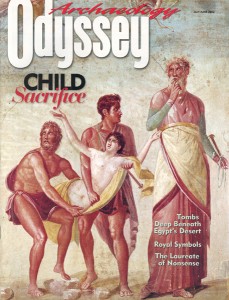Crossing into the Afterlife
Sidebar to: The Shaft Tombs of Abusir
According to ancient Egyptian belief, the earthly life is a brief prelude to an eternal afterlife in which the deceased can hope to continue enjoying the best that is available in this world.
One main purpose of the earthly life, then, is to ensure that the deceased’s soul (or souls, since the Egyptians believed that the deceased survived in several forms after death) can make a successful voyage to the nether world and be sustained there. This takes work. A tomb has to be built (which the Egyptians called a “house of eternity”)—and the more elaborate and luxurious the tomb, the more comfortable the deceased will be in the afterlife. The dead will also need food, drink, clothes, tools, games, ointments, utensils, vessels, writing implements and anything else that might be of use in the endless eternity.
For added protection, the ancient Egyptians covered their tombs with inscribed lists of goods and relief scenes showing offerings. These lists and drawings were also intended to provide for the deceased in the afterlife. It was believed that inscriptions (the names of sacred oils, for example) and relief scenes (showing perhaps an offering of wine to the deceased) would become real once magical spells were uttered. These inscribed and incised offerings were especially important in case insufficient real offerings were made to the deceased—for example, if the deceased did not have enough descendants, relatives or servants to look after his needs.
Already a library member? Log in here.
Institution user? Log in with your IP address.

